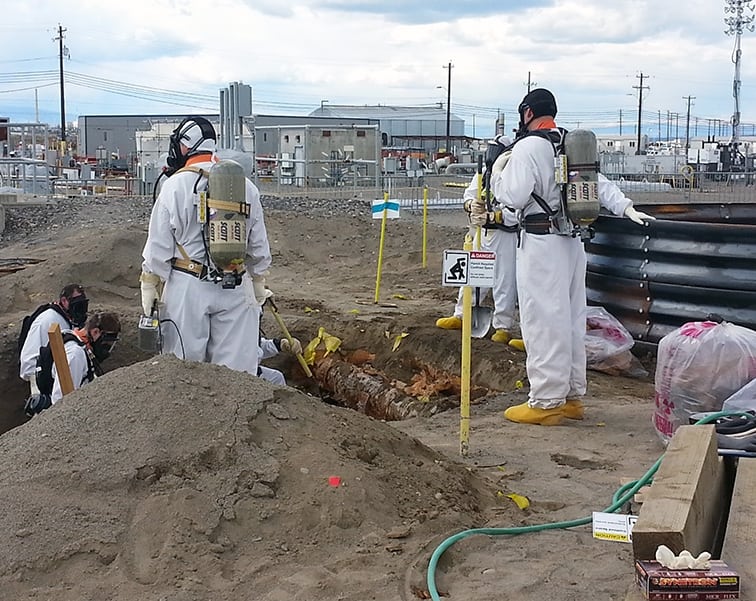
The Energy Department’s staggering environmental liability at its Manhattan Project and Cold War nuclear sites keeps Assistant Energy Secretary for Environmental Management Anne Marie White “up at night,” she said Thursday in Washington, D.C.
Environmental liability is one of the U.S. government’s larger line items, behind the federal debt and entitlement programs such as Social Security and Medicare, White said during a question-and-answer discussion at a House Nuclear Cleanup Caucus gathering.
Government Accountability Office reports in 2016 and 2017 said DOE’s environmental liability more than doubled from $176 billion in fiscal 1997 to an estimated $372 billion in fiscal 2016. Most of the liability falls under the department’s Office of Environmental Management.
The Energy Department has cited factors including inflation, updated program cost estimates and scope of work, regulatory changes, and the absence of a final destination for high-level defense waste, according to GAO.
“It’s a substantial liability. It’s growing, not getting smaller,” White said. “Getting an understanding of what’s driving that; getting it under control” is a paramount concern, she added.
“This brings us to a bias for action,” White said, specifically in chipping away at the liability. The Environmental Management office is looking at some of the small sites within DOE as candidates for “closure” in the very near future. She didn’t identify specific sites, although the agency said this week cleanup at the Separations Process Research Unit (SPRU) in upstate New York should be completed this fall.
The Brookhaven National Laboratory in New York, Energy Technology Engineering Center at the Santa Susana Field Laboratory in California, Moab Uranium Mill Tailings Remedial Action (UMTRA) Project in Utah, Idaho National Laboratory, Lawrence Berkeley National Laboratory in California, and the Southwest Experimental Fast Oxide Reactor (SEFOR) in Arkansas are among the small sites listed in DOE’s environmental cleanup budget.
The Environmental Management office considers small sites to be those having an annual budget of no more than $100 million, which are also administered by the Environmental Management Consolidated Business Center. Its list does not include Idaho or SEFOR, but does include the Separations Process Research Unit, the West Valley Demonstration Project, and the Nevada National Security Site.
In coming months, the cleanup office could issue about $15 billion worth of procurements that could shape the program for years, according to White. While she also avoided discussing specifics here, anticipated upcoming procurement milestones include a potential $250 million contract for construction of the Outfall 200 Mercury Treatment Facility at the Y-12 National Security Complex in Tennessee and a request for proposals for the potential $4 billion Hanford Mission Essential Services Contract at the Hanford Site in Washington state.
The Energy Department’s re-award of a long-term contract for liquid waste management at the Savannah River Site in South Carolina could come by September. A BWX Technologies-led group had its $4.7 billion, 10-year contract overturned in February, and DOE called on all three bidding teams to submit follow-up proposals.
The partnership between DOE and its contractors is vital, White said, noting she has worked on the private-sector side as a consultant. She founded Bastet Technical Services LLC, which worked within the nuclear cleanup industry. At the same time, the government, as owner of the sites, must demand high safety and measurable progress.
“We need you guys to bring your ‘A’ team and your ‘A’ game,” White said of the contractor community.
White said she hopes to bring stability to EM. Since 2010 seven people have filled the “EM-1” position, but only White and two others have been confirmed by the Senate, she noted: “This is a very large program which has not had consistent leadership in eight years.”